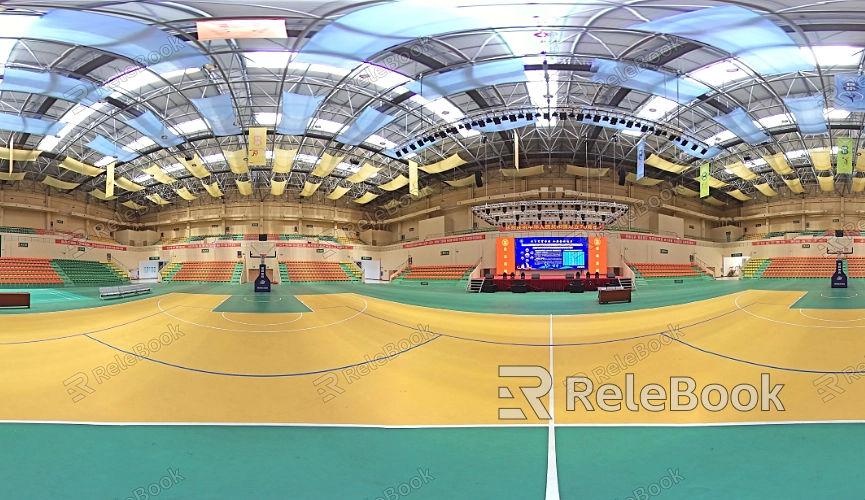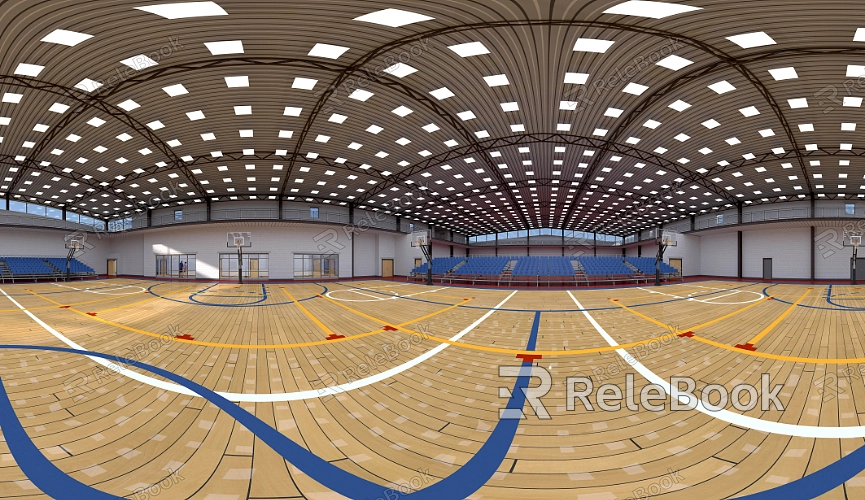Why Are My HDR Textures Not Displaying Correctly in Blender?
HDR textures are commonly used for lighting simulations in outdoor scenes, natural light reflections in architectural visualizations, and rendering complex light sources. 3D software like Blender extensively supports HDR textures, but designers sometimes encounter issues where these textures do not display correctly in their projects. This problem can not only affect the final rendering quality but also slow down the workflow. Let’s explore some common reasons why HDR textures might not display correctly in Blender, along with solutions.

1. Incompatible or Corrupted File Format
When HDR textures fail to display properly in Blender, the first thing to check is the file format. Blender supports various HDR formats, such as Radiance HDR and OpenEXR. However, incorrect or incompatible file formats can lead to display issues.
Check File Format: Ensure you are using HDR formats supported by Blender, like .hdr or .exr. These formats not only store high dynamic range data but are also compatible with Blender's rendering engine.
Corrupted File Issues: If the file displays correctly in other software but not in Blender, it might be corrupted during transfer. Try re-importing or repairing the file.
2. Incorrect Texture Coordinate Settings
Texture coordinates determine how images map onto the surface of 3D models. Even if the HDR file format is correct, improper texture coordinate settings can still result in incorrect displays.
UV Mapping Setup: Make sure to create and correctly apply UV mapping for your model. UV mapping is fundamental to texture mapping, and any errors can lead to misaligned or stretched textures.
Texture Scaling and Rotation: If the HDR texture appears disproportionate or oriented incorrectly, check if it has been accidentally scaled or rotated. Ensure the texture scaling aligns with the model.
3. HDR Texture Color Management
Blender’s color management system can impact the display of HDR textures. Incorrect color space settings may cause HDR textures to appear too dark, too bright, or distorted.
Color Space Settings: In Blender’s texture settings, ensure the HDR texture is set to the correct color space. For most HDR files, select "Linear" rather than sRGB or other color modes.
Exposure Adjustment: If the rendered result appears too dark or too bright, you may need to adjust the exposure value. You can easily modify exposure settings in Blender’s render settings to ensure proper lighting effects for the HDR texture in the scene.
4. Improper Render Engine Settings
Different rendering engines handle HDR textures in various ways. The two primary render engines in Blender are Eevee and Cycles, which have different approaches to HDR processing.
Eevee Render Engine: While Eevee is a real-time rendering engine, it has limitations in handling complex HDR textures, especially in bright areas and intricate shadows. Ensure that the “Light Probes” feature is enabled in Eevee and adjust the intensity of the HDR environment map.
Cycles Render Engine: Cycles is better suited for high-precision rendering, including HDR textures. If you encounter issues with Eevee, consider switching to Cycles and check if it resolves the display problems.
5. Cache Issues
Large HDR files used in Blender can sometimes consume significant memory, leading to cache issues that affect texture displays.
Clear Cache: If you notice HDR textures not displaying correctly or appearing distorted, try clearing Blender's cache. Restarting Blender or manually clearing the cache can often resolve this issue.
Adjust Texture Size: If the HDR file is very large, consider lowering the texture resolution to reduce memory load and speed up loading times.
6. Incorrect Texture Mapping Mode
HDR textures can be used for environment light maps or background images, but different uses require different mapping modes. Incorrect mapping modes can result in display issues.
Check Mapping Mode: If the HDR texture is used for an environment light map, ensure you select the correct "Environment Light" mapping mode. For background images, choose either "Plane" or "Sphere" mapping, depending on the project needs.

7. Imbalanced Scene Lighting
Even if the HDR texture loads correctly, other light settings in the scene can impact its display. An imbalanced lighting setup may overshadow or distort the effect of the HDR texture.
Balance Light Settings: Ensure that the light sources in the scene are appropriately set up to match the HDR texture. Avoid excessive or overly strong lights that could interfere with the HDR effect. Adjusting light intensity and color can help the HDR texture appear naturally in the scene.
8. Viewport Display Settings
Sometimes HDR textures display correctly in renders but have issues in viewport previews. This might relate to viewport display modes or settings.
Adjust Viewport Settings: Make sure Blender’s viewport display settings are set to “Material Preview” or “Rendered Preview” mode for a more accurate view of HDR texture effects. If you are using "Solid Preview" mode, the HDR texture might not display correctly.
9. Render Resolution Issues
The display quality of HDR textures is closely tied to render resolution. If the render resolution is too low, details in HDR textures may be lost.
Increase Render Resolution: Ensure that the output render resolution is high enough to showcase the details in HDR textures effectively. Especially when rendering intricate scenes, higher resolution ensures clearer texture displays.
10. Plugin or Extension Conflicts
Sometimes, third-party plugins or extensions in Blender can cause issues with HDR texture displays.
Disable Conflicting Plugins: If you have multiple plugins installed and HDR textures are not displaying correctly, try disabling them one by one to identify any compatibility issues.
Properly displaying HDR textures is crucial for rendering high-quality scenes. Understanding and addressing common issues can not only enhance your rendering results but also help streamline your project workflow. If you're looking for high-quality HDR image resources, 3D textures, or models, consider downloading from Relebook. Accessing textures and models from Relebook to import into your projects can significantly improve your work’s quality.

